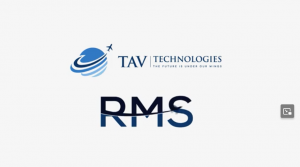Resource Management System (RMS)
| Company | TAV Technologies |
|---|

Images
TAV Technologies Resource Management System (RMS) is a crucial tool for efficiently planning airport operations. It consists of various modules that can be installed individually or as a whole, including Stand and Gate Management, Check-in Desk Management, Carousel Management, and Chute Management. Through long-term academic collaboration and the use of mathematical modeling and optimization algorithms, the system enables airport operators to manage resources effectively and enhance the level of service.
Benefits of TAV Technologies RMS:
- Reduced Operational Costs: By reducing manual work and increasing efficiency, RMS minimizes operational costs. Its advanced multi-KPI-based algorithm maximizes the utilization of valuable resources, leading to smoother operational planning and higher levels of productivity, passenger satisfaction, and airline satisfaction.
- Multi-Airport Management: The advanced architecture of TAV Technologies RMS allows operators to plan and manage resources across multiple airports from a single interface.
- Optimized Resource Allocation: The revolutionary multi-KPI optimization algorithm ensures optimal resource allocation, enabling airports to achieve efficiency based on their configured rules and weightings.
- Availability: The system offers easy access through a web-based application, providing availability anytime from any platform.
- Flexibility: With numerous implementations for daily and seasonal operational planning periods, RMS offers flexibility and improved adherence to Service Level Agreements (SLAs).
- Reliability: The solution provides reliable data across all systems, ensuring consistent and accurate resource management.
Key Features of RMS:
- Seasonal and operational resource allocation
- Gantt Chart-based allocation plan with a timeline display of activities
- Aerial view of operations at the apron by timeframe
- Advanced rule engine and configuration management
- Advanced conflict management and intelligent resource adjustment
- Real-time automated scheduling
- Advanced optimization algorithm
- Easily adaptable resource profile constraint definition
- Planned or mandatory ad-hoc maintenance management
- Easy integration with existing or legacy systems through open architecture
- Increased level of services throughout the airport
- Data integration with other systems through ESB/MW interface
- Stand-alone operation with full functionality in case of connection failure, with data synchronization upon connection resumption
- Compliance with IATA, ICAO, and industry-related standards
- Multi-language support
- Log management
- Built-in reporting facilities
The customizable user interface of RMS provides situational awareness with color-coded resources and flights based on predefined rules and configurations. The advanced algorithm offers a “What-If Scenario” planning feature that allows operators to run alternative scenarios with different rule sets, providing insights into potential bottlenecks and capacity predictions.
TAV Technologies RMS Core Optimization Engine utilizes advanced optimization capabilities based on the Big Bang-Big Crunch Optimization algorithm. Developed in collaboration with prestigious academic partners, such as Istanbul Technical University and the Scientific and Technological Research Council of Turkey (TUBITAK), the optimization algorithm maximizes resource utilization, revenue generation, and customer satisfaction based on business requirements.
TAV Technologies RMS also offers advanced rule management functionality, allowing the definition of soft and hard rules based on various criteria. Weighted prioritization of rules enables the optimizer to offer the best-fit solution by considering defined rules and weightings.
The graphical interface of TAV Technologies RMS supports users in decision-making processes with informative visual indicators, noticeable warnings, and color-coded resources and flights. The intuitive Gantt user interface and Aerial View of operations at the apron by timeframe enhance operational efficiency in time-critical cases.













